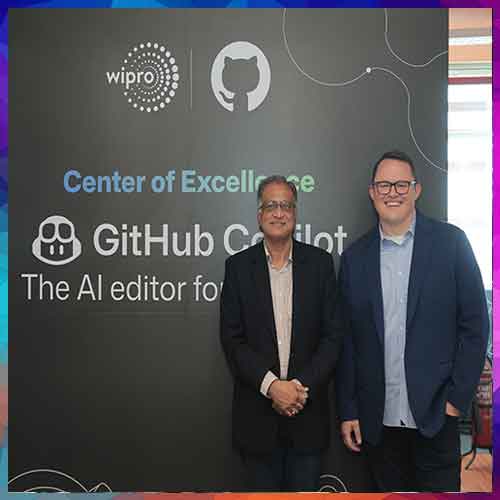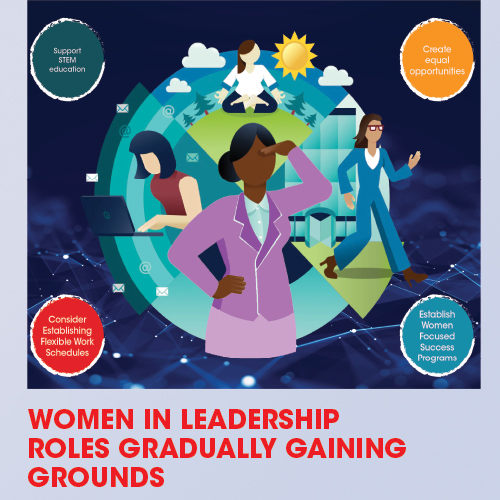
Though we are living in a modern and technologically advanced world, still we find less women representation in leadership roles in tech industry. It is still overcrowded by men due to socio-cultural reasons which do not encourage women to take up challenging careers.
There is no doubt that a strong disconnect lies between the number of women entering the technology space and the rate at which they are promoted and sponsored compared to their male colleagues.
While men are typically promoted on potential, women have to prove themselves before they are
promoted.
NASSCOM report reveals that women comprise only 26% of the entire IT workforce of India. Only 9% of women occupy the executive roles in the Indian tech industry. Another report by 451 Research brings forth the fact that women make 34% of the Indian IT workforce and a majority of the workers are under the age of 30. Moreover, the gender parity rate in STEM (Science, Technology, Engineering, and Mathematics) graduates stands at 50:50.
The most important challenge is to retain gender diversity in the middle management and executive roles. It is important to maintain parity from graduate to management level. Many initiatives are being taken these days by the government, NASSCOM and various tech companies to reduce the gap.
Across sectors, the likes of KPMG in India, Larsen & Toubro, Genpact, JP Morgan, Tata Starbucks, among others, are stepping up programmes to help more women professionals who after a career break are making a comeback into the corporate world. This works at two levels: Improving gender diversity statistics and tapping into an experienced talent pool strong on attributes such as time management and productivity.
Let’s take a look at how the women in technology leadership views the situation and their opinion on how the industry as a whole can come forward and eradicate this differentiation.
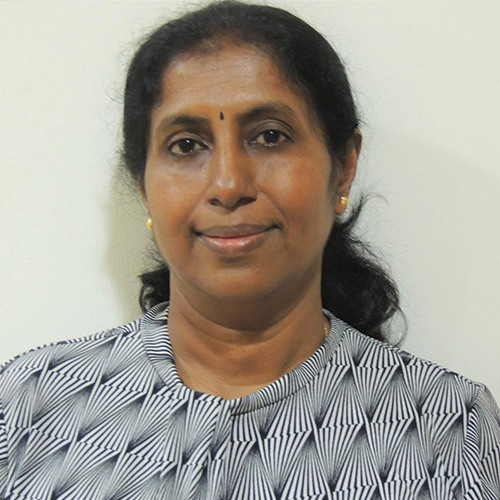 Sudha KV
Sudha KV
Vice President,
Dell Technologies India
“Society and workplace must be responsible to create an unbiased ecosystem for employees”
“STEM, or technology at large is an extremely fun and inclusive industry. As the industry continues to take center stage across the world, it is becoming one of the most attractive areas for youngsters today.
A large number of women enter the technology workforce, and perform exceptionally well. However, they quit at the mid-level, before making it to the top. Therefore, while there is a significant representation of women in technology, the ladder to leadership levels dwindles. This leads to the leaky bucket phenomenon where very capable women professionals - after reaching a certain point in their career, drop out due to many obstacles – family responsibilities, workplace biases etc.
It is incumbent upon society and the workplace to create an unbiased ecosystem for all to persevere and excel, so that we do not lose this excellent talent pool midway.
At Dell Technologies, our endeavor is to create a safe, diverse and growth-driven landscape for our employees. This means going beyond the realms of just hiring people from different genders and rather, focusing on creating an inclusive, safe and comfortable workspace for men and women alike. Companies must aim to introduce various sensitization programs, and focus on how their female workforce can make the most of training, and upskill consistently.”
 Sindhu Gangadharan
Sindhu Gangadharan
SVP & MD, SAP Labs India and Head
SAP User Enablement
“We invest into building, strengthening and supporting every important milestone or career development and holistic growth for women”
“Over the last two decades, some brilliant female technologists, visionaries, and product leaders have created disruptive solutions and have changed the narrative for young girls who aspire to pursue a career in tech.
Additionally, forward-looking organizations are embracing Hybrid Work or Flex Work, which provides an even better opportunity to address the skewed gender ratio in the workplaces. Leaders are finally realizing that I&D is no longer just the right thing to do; it is a business decision that has a direct impact on the bottom line of the organization because diverse teams are better positioned to unlock innovation driving market growth and enabling nonlinear novel thinking. This year’s theme of DigitALL is again an opportunity for organisations to empower millions in a deeply polarized world.
At SAP, we believe a sustainable future requires the development of integrated and transformative technologies along with easy-access to digital training. We have in place targeted intervention amongst young women towards building employable and future IT Skills and workforce readiness. Our goal is to equip them with advanced career training in topics viz., data science, cloud computing, AI, Machine Learning and programming languages; provide them mentorship on how to build a career with IT industry and prepare them for future skills. We invest into building, strengthening and supporting every important milestone or career development and holistic growth for women, to ensure that they can build a success career. Some of our STEM-related skilling initiatives include Code Unnati, Nanhi Kali, and Tech Saksham to name a few.”
 Claire Thomas
Claire Thomas
Chief Diversity and Inclusion Officer Hitachi Vantara
“Hitachi Vantara takes up various initiatives to increase women representation”
“The relative representation of women in technical roles declined between 2018 and 2022, according to LeanIn.org and McKinsey & Company data. As per the survey of 40,000 employees and 333 organizations employing more than 12 million people, women are grossly underrepresented in technical and engineering roles, and they constitute less than a third of the workforce at entry-level. With technology having such a wide-reaching impact in our everyday lives, we need to make sure the people designing, building and testing this technology represent society as a whole, so gender representation is critical.
At Hitachi Vantara, we firmly believe in the power of technology to contribute to society and protect our planet for future generations. We must incorporate the thoughts, views, and needs of half of our world’s population- women - to accomplish these goals.
In the past year, we have made significant progress through investments in family-friendly policies, new healthcare benefits, flexible working, communities that provide safe spaces, new leave policies, education, and mental health support to bring diverse talent into Hitachi Vantara. We have promoted female talent from within and brought in new female talent at leadership levels, including 3 new female global leaders in the past year - Leadership - Corporate Executive Team, Hitachi Vantara and there is still a long way to go. As a part of our constant efforts to promote gender diversity and increase the representation of women to 30 percent by 2025, we are:
• Launching a pilot leadership program through a transformational TED-style speaking course called Amplify with Ginger Leadership Communications, culminating in a range of ‘Ideas Worth Amplifying.’
• Running workshops and e-learning programs with Catalyst on Men Advocating for Real Change to inspire and equip men to leverage their unique opportunity to be advocates for change and raise awareness of bias and how to tackle it.
• Co-creating an allyship program with Token Man Consulting and Potentia Talent Consulting, led by our Women of Hitachi employee resource group (ERG), with input from our Rainbow Connection (LGBTQIA+) ERG to include an intersectional lens on gender.
• Providing career development opportunities to our ERG leaders/members through a mix of internal discussion and externally facilitated training.
• nvesting in programming for girls studying STEM through our partnership with Visit.org.
We need more women to make an intentional choice about a career in technology, through technical and non-technical paths, rather than leaving it to chance. We need more gender diversity to design better solutions to the world’s largest challenges. We must create economic independence for more women, close the gender pay gap, and break harmful stereotypes for people of all genders. We must ensure that everyone has the digital skills and technology access needed to provide for their families. We must demonstrate true allyship in everything we do and support others with our knowledge and experience wherever we can.”
 Jhilmil Kochar
Jhilmil Kochar
MD
CrowdStrike India
“For some women who take on the leadership role, the challenges would be more on the personal front, which is balancing the needs of the family and the demands of work”
“At CrowdStrike, we have a keen interest in bridging existing disparities and enabling the use of technology to create a safer, more sustainable, and more equitable future for everyone. We focus on supporting our people in growing their careers, with specific groups dedicated to women, parents, veterans, and people of colour, with the goal of expanding all of our people’s perspectives through meaningful connections and conversations with those they might not interact with on a daily basis.
Leaders have the responsibility of supporting women through mentorship programmes, peer training, induction, reskilling, and upskilling courses, which in turn will help nurture their growth. Also, mentorship and guidance from women who have had successful STEM based careers encourage others that there is a pathway for them. Such initiatives can allow women employees to gain knowledge and skills that can open up a variety of career paths within the same company. As part of my contribution to the field, I play an active role as a mentor to women in cybersecurity and to children as part of the Atal Innovation Mission. In partnership with BetterUp, our Learning and Development team provides 1:1 career coaching for women leaders and those returning to work from parental leave.
According to me, for some women who take on the leadership role, the challenges would be more on the personal front, which is balancing the needs of the family and the demands of work. I did have my share of a few testing times; however, with the excellent support of my family and colleagues at CrowdStrike, I was able to surmount them.”
 Dr. Jessie Jamieson
Dr. Jessie Jamieson
Senior Research Engineer
Tenable
“Increased flexibility and remote opportunities are required so that more women take up career in tech industry”
“Not only in technology but in STEM fields broadly, the industry suffers from a lack of women, from all backgrounds. This is because young girls are often discouraged from pursuing STEM fields at an early age. We’re starting to see societal views change slowly but there’s still more work to be done.
We’re continually striving to promote gender equality in the workplace and in the community at Tenable. The industry must promote an open and supportive environment that unites women and allies from all departments, backgrounds and experience levels. We’ve taken our own steps to do so, including our employee resource, Women@Tenable, which supports personal and professional growth through shared experiences, resources and development opportunities.
We offer unconscious bias training to all people managers to remove bias from decision-making, including recruiting, promotions and performance review evaluations. We’re focused on recruiting top talent with diverse sets of experiences, backgrounds and talent. All of these initiatives help employees feel comfortable being their unique selves in the workplace.
A diverse workforce is a prerequisite to unlocking the full potential of any team or organization. Only through increased inclusion and diversity—of race, gender, perspective and thought—can our industry achieve greater creativity and innovation, think outside the box, and outmaneuver our adversaries.
I believe the empowered workforce is going to require increased flexibility and remote opportunities which will hopefully translate into more women exploring the tech industry as a career.
Over time, I have learned that establishing boundaries (and sticking to them) is so important! Once my work day is over, I try to be diligent about stepping away from the computer and spending time with my family or doing extracurriculara activities.”
 Belinda Pervan
Belinda Pervan
APJ Marketing Vice President
Veeam Software
“A diverse and inclusive work culture should start from the top”
“When we think about diversity, it means respecting people from different backgrounds, cultures and experiences. While we’ve come a long way, there is still much to do to ensure that we continue to make the workplace equitable for women. Historically, women have been limited to certain industries and have been held to different standards than our male counterparts. This is still largely the case for women in STEM, but we are seeing gradual changes in the industry.
Being vulnerable in the workplace helps build meaningful connections and makes one more authentic when interacting with colleagues. I remember when I started in my career when female leaders wore the same grey suit and conformed to a masculine ideal. Females essentially mirrored men in the way they spoke and acted, often downplaying their femininity and putting on an aggressive personality in order to be heard. I was lucky to have a strong female leader and mentor, Wendy Johnstone, who taught me how to embrace being authentic and vulnerable. She role-modelled how not to succumb to these pressures and how leadership was not about being available 24/7. This advice followed me when I became a mother and had to learn to set different boundaries within my week than in the past.
Setting the example for fostering a diverse and inclusive work culture should start from the top. Having more women in leadership positions and ensuring interviewing panels include better representation of all genders can address unconscious bias when hiring. These are policies and practices that are more often set by
our leaders, who must understand where there needs to be more focus to achieve equity.
When we talk about equity versus equality, equity emphasises recognising that people have different needs, whereas equality focuses on treating everyone the same. This results in programs to support working parents, for example, that include flexible working hours to support their children. Understanding the equity/equality difference can also mean implementing greater support for structured programs for women to help them advance their careers, especially seeing that we currently don’t see enough women in C-suite roles.
Building that culture may begin at the top, but each individual has their role to play. I’ve spent the last couple of years getting really involved in mentoring women and giving them guidance on how they can empower themselves and make their workplace culture more inclusive. At Veeam, I am an executive sponsor of our Women in Green and Mentor Labs programs and personally co-lead Mentor Walks Singapore, all of which are aimed at connecting women, sharing experiences and making mentorship accessible. Playing an active role in such programs continues to build better inclusivity, regardless of participants’ seniority or gender.”
 Priyanka Swain
Priyanka Swain
Director of Engineering
Tally Solutions
“Flexible work arrangements for women in tech will help maintain their personal priorities thus creating a great work-life balance”
“There is a lack of women representation in the Tech industry. Although there have been efforts to increase diversity and inclusion in the Technology sector, women are still grossly outnumbered in many areas of the industry, particularly in leadership roles and technical positions. Several reasons including historical biases and stereotypes have discouraged women from pursuing their career in the Technology and innovation world along with ongoing challenges and discrimination in the workplace.
However, continuous efforts are being taken by organizations to increase diversity and inclusion amongst women employees. This includes initiatives such as mentorship, internship programs, diversity and inclusion training, and efforts to create more equitable hiring and promotion processes.
There is still a long way to go in this journey, however, by working together to address these challenges, we can create a more inclusive and diverse technology industry that benefits everyone.
Creating a sustainable pipeline of talent and increasing women representation at senior levels requires an all-round approach that involves education, mentorship, leadership development and a focus on creating inclusive cultures.
We, at Tally Solutions, are definitely focusing on all these aspects. Tally offers Engineering internships to all including opportunities for women to gain hands-on experience in the Technology industry and provide mentorship and networking opportunities that can be valuable for women as they progress in their careers.
We are also placing greater emphasises on diversity in our hiring processes and trying to build inclusive cultures that support women in the workplace with the likes of flexible work arrangements including work from home options, providing mentorship and being intolerant to any bias and discrimination.
We are leading as an organisation who provides leadership opportunities to senior women. Be it Tally Care, Tally Education, Engineering or Marketing, we have a strong women force in the Leadership leading us all the way.
We are in the process to create leadership development programs specifically for women which can provide the skills and support needed to advance into senior roles and can also help to create a pipeline of future leaders.
The Technology industry should collaborate with educational institutions to encourage girls to pursue more in the Science and Innovation sector. Along with this, the industry can invest in sponsoring scholarships and offering mentorship programs to help women pursue careers in the Tech industry. This will help organisations to create a larger pipeline of diverse talents for themselves.
Flexible work arrangements such as part-time work and work-from-home options for women in tech will help maintain their personal priorities thus creating a great work-life balance. Mentorship and networking opportunities for women are an absolute must in my opinion, which can help advancement in their career and hence create a longer work relationship.
I feel being flexible with my schedule along with the right planning and prioritization helps me to cope with most of my tasks, be it at home or in the office. Spending a few minutes before bedtime in planning for the next day goes a long way in organising all my tasks properly.
I believe in enabling my teams and my family so that responsibilities are shared and delegated effectively.
This also allows team members to develop their own skills and take on more responsibility and of course makes my family self-reliant as well.
Above all, having a support system of family, friends, and colleagues is a blessing and I believe it is very crucial for a woman to have this support system.”
 Vaishnavi Shukla
Vaishnavi Shukla
HR Head, Comviva
“Comviva follows a strong culture of encouraging growth mindset and challenge the stereotypes”
“With the wave of digital transformation across sectors, it is also crucial to bridge the digital gender divide and create a future that is inclusive and equitable for all.
The past few years have magnified the existing gender digital gap, but it has also presented an opportunity to accelerate our efforts towards digital as well as financial inclusion for women, enabling them to achieve their maximum potential.
As women leaders, I believe it is our responsibility to advocate for policies and initiatives that will help close this gap and guarantee equal access to education, training, and job opportunities. We need to find more ‘STEM girls next door’ and encourage them to innovate, fail and most importantly, fuel the growth mindset.
The government and policymakers can help address this issue by investing in digital infrastructure and skill development and promoting gender equality.
Let’s aim to work together to create a world where diversity and innovation are encouraged and where all women have equal access to technology. We at Comviva have a strong culture of encouraging growth mindset and challenge the stereotypes. We believe that inclusiveness is the only path to sustained success.”
 Vasanthi Ramesh
Vasanthi Ramesh
VP of Engineering for Manageability and Data Protection, NetApp India
“To achieve women driven workplace organizations should have a non-prejudiced and thriving work environment”
“In the past decade, the emphasis on equal opportunities for women led to a higher representation of women in the IT industry. But we still have a long way to go.
At this juncture, just equal opportunities are not enough. Organizations must create a non-prejudiced and thriving work environment to achieve a workplace driven by women.
As a first step, within an organization, every leader should step up and be an ally in mentoring women and opening avenues to showcase their accomplishments.
Further, organizations must invest in communication tools and networking platforms to help women upskill and build relationships with peers and industry leaders.”
 Sqn. Ldr. Dimple Rawat (Retd.)Director HR, Barco India
Sqn. Ldr. Dimple Rawat (Retd.)Director HR, Barco India
“Organizations must have a consistent strategic approach to strengthen equality and foster an appropriate ecosystem”
“As more and more women make their mark in technology, we have also seen remarkable growth in the innovation quotient, leading to better and more advanced solutions and output. The Indian IT industry has shown tremendous improvement in bridging the gender gap and empowering women in technology. Gender parity remains essential to a resilient future, and there is a strong need to provide adequate mentorship and equal opportunities to women in the global STEM ecosystem.
Moreover, organizations need to implement a consistent strategic approach to strengthen equality and foster an appropriate ecosystem with policies aimed at enhancing women’s career paths and unlocking innovative upskilling possibilities and technology-based education, starting at the grassroots.”
 Anita Kukreja
Anita Kukreja
Head - Marketing and Channel Sales IceWarp
“The Tech industry can take several steps to increase women representation”
“There is a significant lack of women representation in the technology world. Despite efforts to promote diversity and inclusion, women still face numerous challenges, including gender bias and discrimination, that limit their advancement in this field.
This lack of representation is not only a social justice issue, but it also affects the overall performance of the technology industry by limiting the range of perspectives and experiences that are brought to the table.
IceWarp is committed to creating a sustainable pipeline of talent by investing in initiatives that attract, retain, and develop women in technology. We offer mentorship, networking, and leadership development opportunities to help women build the skills and relationships needed to succeed in senior roles.
Additionally, we stay cognisant of the diversity and inclusion parameters while recruitment and promotion processes to ensure that we are creating a level playing field for all candidates.
The Tech industry can take several steps to increase women representation, including promoting workplace culture that values diversity and inclusion, providing equal pay and opportunities for growth and advancement, implementing flexible work arrangements, and investing in initiatives that attract and retain women in technology. I also believe that we need to provide young girls with the necessary education and support to pursue STEM fields and consider careers in technology.
Balancing personal and professional life can be challenging when in a leadership role like mine which also expects me to travel quite frequently, but it is critical for maintaining well-being and overall performance. To achieve balance, I prioritize self-care, set boundaries, and delegate responsibilities when necessary.
I also make sure to communicate effectively with my team, family, and friends to manage expectations and avoid over-commitment. Finally, I am intentional about using my time effectively and staying organized to ensure that I am able to meet both personal and professional commitments.”
“There is a significant lack of women representation in the technology world.
Despite efforts to promote diversity and inclusion, women still face numerous challenges, including gender bias and discrimination, that limit their advancement in this field.
This lack of representation is not only a social justice issue, but it also affects the overall performance of the technology industry by limiting the range of perspectives and experiences that are brought to the table.
IceWarp is committed to creating a sustainable pipeline of talent by investing in initiatives that attract, retain, and develop women in technology.
We offer mentorship, networking, and leadership development opportunities to help women build the skills and relationships needed to succeed in senior roles.
Additionally, we stay cognisant of the diversity and inclusion parameters while recruitment and promotion processes to ensure that we are creating a level playing field for all candidates.
The Tech industry can take several steps to increase women representation, including promoting workplace culture that values diversity and inclusion, providing equal pay and opportunities for growth and advancement, implementing flexible work arrangements, and investing in initiatives that attract and retain women in technology.
I also believe that we need to provide young girls with the necessary education and support to pursue STEM fields and consider careers in technology.
Balancing personal and professional life can be challenging when in a leadership role like mine which also expects me to travel quite frequently, but it is critical for maintaining well-being and overall performance.
To achieve balance, I prioritize self-care, set boundaries, and delegate responsibilities when necessary.
I also make sure to communicate effectively with my team, family, and friends to manage expectations and avoid over-commitment.
Finally, I am intentional about using my time effectively and staying organized to ensure that I am able to meet both personal and professional commitments.”
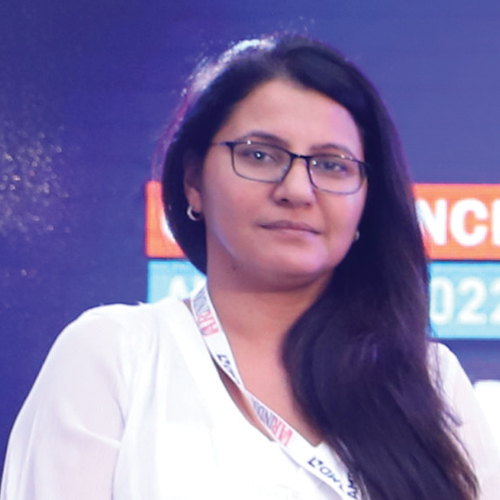 Vinny Sharma
Vinny Sharma
Marketing Director - Asia Pacific & Japan, Securonix
“Women leaders bring a unique set of skills and imaginative perspectives”
“In my opinion, companies are taking a number of initiatives to increase women representation at workplaces but there is still a long way to go. According to Analytics India Magazine (a renowned tech magazine) research, only 29% of the tech workforce are women, which makes us question how we can encourage further women to enter the tech industry.
Although there are several women role models in the tech field who have broken the traditional glass ceiling, there is still underrepresentation of women in senior leadership roles. Moreover, there are real-life cases wherein women are paid less than their male counterparts for similar roles. It’s not just the corporates to blame but the whole society has inculcated this generational bias that only men can excel in STEM fields, which is not true.
If women are encouraged early on in their lives, there is a lot of potential that can be harnessed to fulfill the STEM talent demand.
We are committed to ensuring diversity and inclusion in our organization. We are constantly working to create a gender-inclusive workplace as it’s proven that when women become leaders, they bring a unique set of skills and imaginative perspectives to the table. To this end, we started an EMPOWERHOUR series which runs quarterly to discuss relevant and important topics to continue empowering our workforce around the globe.
EMPOWERHOUR emphasizes the company’s commitment to creating an inclusive culture so people can become their best.
We also recently announced the appointment of Nayaki Nayyar as the CEO of Securonix. She is a seasoned tech professional who has led critical success in prior roles. Not only the CEO but we have several other female leaders in senior roles including myself, who are serving as role models to our fellow female employees.
It is true that being in a leadership role calls for a larger responsibility and requires you to be more actively involved and engaged in all the operations of the organization.
At Securonix, we always make sure that we provide all our employees with a more flexible and empowering work culture so that they can effectively balance their personal and professional lives.
My journey at Securonix has been fulfilling so far as the company gives me ample opportunities to grow and at the same time I am able to lead a healthy personal life. The flexible work environment, excellent work culture and a reliable team helps me strike the right balance between work and home.
I always prioritize quality over quantity and stay on top of my schedule by utilizing my work hours in a way that maximizes my performance.
I also make sure to take frequent breaks to rejuvenate and get back with a fresh perspective.”
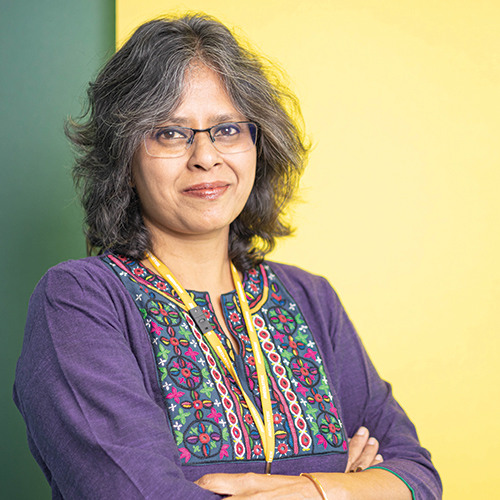 Rituparna Mandal
Rituparna Mandal
General Manager
MediaTek Bangalore
“Specific initiatives should be implemented to support women in technology industry”
“I agree there is significant improvement in the number of women employees in the IT sector, around 36% as per the Government’s estimates. This would be seen as a great achievement, but it is not because this is largely the IT services domain. Technology jobs are different. Women who aspire to work in technology face many obstacles, from stereotypes about their abilities to a lack of female role models in the industry. It’s time for us to recognize the potential of women in technology and create a more inclusive environment for them to thrive.
As India continues to strive for excellence in electronics manufacturing, the government should focus on increasing women’s participation in the technology sector to fully realize their potential towards the country’s development.
Gender disparity in the tech industry is a pressing issue that deserves the industry’s attention. To address this problem, we need to focus on implementing specific initiatives that support women in tech. For example, mentorship programs and diversity hiring targets can help make technology centers and research facilities more inclusive for women. We also need to create women-friendly policies for work environments, such as special incentives for women techies and booster programs for women techie start-ups.
Additionally, WFH policies should be revised to allow young mothers to work from home, so that they can balance their work and family responsibilities.
As an entrepreneur in a male-dominated field, I had to work extra hard to build my dream start-up while also fulfilling my roles as a daughter, wife, and mother. Throughout this journey, I learned the importance of staying calm and focused, even in the face of adversities. I realized that perfection is not the key to success, but rather doing your best and learning from your mistakes.
As a leader, I try to motivate my team by fostering a positive, collaborative environment. By building strong personal relationships, we are able to work together more effectively, both in our personal lives and in the workplace. I’ve found that maintaining an optimistic outlook and a can-do attitude can make all the difference in achieving our goals.”
 Madhushree Dutta
Madhushree Dutta
Head HR
Pure Storage India
“To increase women representation businesses, policymakers, and the general public need to work together”
“Certainly, the lack of women representation in the tech industry is a cause of
concern. According to NASSCOM, women only make up 26% of India’s IT workforce. In technical and managerial positions, this underrepresentation is particularly pronounced with just 9% of women occupying executive roles in India’s
IT sector.
The pressing reasons for this underrepresentation are many, starting with women’s education including creating the educational path for them to pursue technology. Engineering and technical colleges have a smaller fraction of women.
A smaller fraction of that makes it to the industry and sustains to create a path for themselves. Even with that there are more female graduates in science, technology, engineering, and mathematics (STEM) at tertiary level in India than in developed nations, there are fewer women tech leaders, role models, and tech startups run by women today. Lack of women representation is accentuated by unconscious biases and stereotypical gender expectations in the society are significant factors that act as barriers to women. Further, women also find it challenging to integrate and balance their personal and professional lives.
“Tech companies should be involved in promoting education at the ground level by collaborating with educational institutions to offer internships, mentorship, and scholarships to girls and women interested in STEM fields. Moreover, creating mentoring and coaching opportunities
for women at engineering colleges can also be a great accelerator for STEM education.
This would help them in gaining real life experience from people in the field and will nurture their interest in the field. Also, collaborating with the government to create policies that will help girls from rural backgrounds to pursue education will also create a huge impact on overall participation of girls in STEM education.
To address the underrepresentation of women and encourage more diversity and inclusion in the sector, businesses, policymakers, and the general public must work together.”
 Rajalakshmi Srinivasan
Rajalakshmi Srinivasan
Director of Product Management
ManageEngine
“We have come a long way and technology is a great enabler that helps empower women, boost their self-confidence, and eliminate the fear of failure”
“While I agree that the number of women in the technology world is less compared to their male counterparts, I wouldn’t call it a lack of representation. We have come a long way and technology is a great enabler that helps empower women, boost their self-confidence, and eliminate the fear of failure. In that sense, innovation and technology act as a catalyst and helps streamline gender equality. The responsibility lies with the individual as well to embrace tech with a continuous learning attitude and upskill themselves to take up challenges.
Leaders around the world are also trying to educate, mentor, and adopt democratisation. There is still a long way
to go, but I believe we are on the right track. Inclusivity and shared responsibility is
the key.
The company culture plays an important role in creating the sustainable pipeline for growth. Opportunities are wide open for anyone. At ManageEngine, we ensure that there is openness to ideas and give due credit and recognition as appropriate. We also take care to identify and nurture talent, and provide the required support, guidance, and encouragement by creating a sense of ownership that motivates individuals to accept lead roles.
Be inclusive. Avoid being judgmental and award jobs based on merit, never on gender. Create an environment where both men and women feel confident accepting challenges and aren’t afraid to fail. Just like men, women need proper guidance from the leadership staff to advance their careers.”
 Sharda Tickoo
Sharda Tickoo
Technical Director - India & SAARC Trend Micro
“To increase women representation in the tech industry, companies must take a multifaceted approach that addresses the root causes of the issue”
“According to a report by 451 Research, women now make up 34% of the IT workforce in India, with the majority of these workers under the age of 30. Indeed, the youth of the Indian IT labour force has significantly powered its rapid growth, and the country is now almost at a 50:50 gender parity rate in STEM (Science, Technology, Engineering, and Mathematics) graduates. The next challenge is retaining gender diversity through middle management and leadership roles.
As a result, while India has made progress towards gender diversity in the technology industry, challenges in retaining diversity through middle management and leadership roles continue to be a barrier.
Through various initiatives and programmes, Trend Micro strives to achieve our goal of fostering a diverse and inclusive workplace. One of our key strategies is to keep a close eye on available talent in the market and actively engage with potential candidates who may be a good fit for our organisation, even if we do not have a role open at the time.
We place a strong emphasis on developing women’s talent and preparing them for senior leadership positions within our organisation. We are proud to have women in key leadership positions in India, including the Head of Support, the Technical Director, and the Marketing Director.
We offer a variety of upskilling initiatives that empower women to develop new skills and competencies in order to support the growth and development of our female talent.
We also value work-life balance and have implemented flexible work policies that enable our employees to balance their personal and professional lives. This policy has been especially beneficial to our female employees and has supported their growth and development within the organization.
To increase women representation in the tech industry, companies must take a multifaceted approach that addresses the root causes of the issue. Firstly, companies should review and revise their hiring practices to eliminate biases and ensure that they are attracting diverse candidates. Secondly, companies should offer development programs, mentorship, and sponsorship opportunities that support the career growth of women through possible collaborations with schools and universities to pursue STEM (Science, Technology, Engineering, and Mathematics) education and careers. Finally, companies should create a culture of inclusion where everyone feels valued and supported, regardless of gender.
Balancing personal and professional lives can be a challenge, particularly for those in leadership roles. At Trend Micro, we encourage a culture of work-life integration that recognizes that the two aspects of life are interconnected. As a leader, I prioritize self-care, time with family, and hobbies outside of work to ensure that I have the energy and focus needed to be successful.
To achieve this, I have carved out a personal space outside of my work, which I quite zealously guard. My workout time at the gym and certain regular activities with my kids on a weekly or monthly basis are absolute no-go areas, even in grave emergencies. If, by some chance, the boundaries have to be violated because of unplanned travel, etc., I make sure that I more than make up for the transgressions.
Additionally, I delegate tasks and responsibilities to my team to ensure that I can focus on strategic priorities and lead effectively.”
 Roopa Raj
Roopa Raj
Vice President, Head of IT, APJ and Global Head of Engineering, SaaS Transformation, VMware
“In India, efforts have begun to correct this gender imbalance, both in the workforce and in leadership roles”
“Despite efforts to increase diversity in tech, women continue to be underrepresented in both mid-level technical and leadership positions. According to Skillsoft’s 2022 Women in Tech Report – India Region, only 7 percent of the 1,004 women tech professionals surveyed held executive-level positions (CIO, CXO, CISO), while 13 percent held managing director-level positions. Studies have found that women possess a natural advantage when it comes to personality traits for leadership positions. Women were ranked higher
in a survey conducted by the Pew
Research Center Social and Demographic Trends. In India, efforts have begun to correct this gender imbalance, both in the workforce and in leadership roles.
At VMware, we believe that diversity and inclusion are critical to our success, and we are committed to building a workforce that reflects the communities we serve.
To achieve this goal, we have implemented several programs that work towards
building a pipeline of women leaders.
The VMinclusion Taara program by VMware is designed to empower women in India to thrive in the technology industry from the moment they begin their careers. The program offers a comprehensive suite of resources, including training, mentorship, networking, and career development opportunities, to help women re-enter the workforce after a career break.
We also have mentorship programs and our POD’s (Power Of Difference) celebrates diversity. Our inclusive policies and the celebration of diversity are one of the reasonsVMware has been regularly ranked as one of the best Employers for Diversity.
Balancing personal and professional life is a challenge for anyone, especially for those in leadership roles who often have to juggle multiple responsibilities. It is even more challenging to play global roles since most of your team are distributed across multiple geographies and so are your stakeholders and customers. However, it is essential to make time for both personal and professional priorities to avoid burnout and maintain overall well-being. By prioritizing, setting boundaries, delegating tasks, empowering teams, practicing self-care, and effective communication, it is possible to achieve a healthy balance between personal and professional life.”
 Priya Kanduri
Priya Kanduri
CTO - Senior Vice President- Infrastructure Management & Cyber Security services, Happiest Minds Technologies
“The ratio of women employees increases in IT industry over last 20 years”
“There has never been better time than now for women to be in IT & tech in India. Ratios of women employed in the IT industry in India have risen constantly over the past 20 years. Women represent 50% of the graduates in STEM field now while they make up over 30% of IT workforce in India. Western world is in total contrast with this, where women representation in tech fields is far less and declining. Indian tech firms are encouraging women empowerment and introducing numerous women friendly policies to promote workplace diversity & women leadership.”
 Hwa Choo Lim, Vice President, Human Resources, Equinix Asia-Pacific
Hwa Choo Lim, Vice President, Human Resources, Equinix Asia-Pacific
“At Equinix, we place great importance on making women feel “I’m safe, I belong, I matter”
“Observing the theme “DigitALL: Innovation and technology for gender equality”, this year’s International Women’s Day is an opportunity for us to recognize the achievements of women who forged their own path no matter the obstacles thrust in their way. Whether it’s dispelling stereotypes, speaking up for themselves and their peers or achieving beyond what was expected of them, we celebrate their accomplishments and courageous perseverance. At Equinix, we place great importance on making women feel “I’m safe, I belong, I matter.” Through long-standing communities for empowerment like the Equinix Women Leaders Network (EWLN), women are able to mentor, connect, belong and nurture one another through ongoing programs that encourage professional growth.
Going the extra mile this year, Equinix Foundation, our employee-driven global charitable organization, has committed a $100,000 grant to World Pulse to support its work accelerating digital inclusion and closing the gender digital divide. In order to close the digital divide for women, we will continue to empower women specializing in technology roles, giving them the support and confidence they need to succeed and thrive in the field.”
 Monalisa Samal, Senior Vice President, Data and Risk Analytics, Xceedance
Monalisa Samal, Senior Vice President, Data and Risk Analytics, Xceedance
Training, flexibility, equal opportunities etc. required to increase women representation in technology industry
“Today there are only 25-30% of technology roles filled by women in multiple industries. Various reasons cause this, but there is clearly a lack of women in these roles, and we can all do better to correct the trend.
In my research, I have discovered that large tech companies average 35% of women in the workforce, but only 28% in leadership roles. While most companies are focusing on developing more female leaders, the following considerations are critical for success in these initiatives:
1. Understanding unconscious bias and working to eradicate it through focused training at leadership levels.
2. Prioritizing mentorship programs and encouraging leaders to be involved and vocally support them. This executive support can do amazing things to cultivate support across mid and entry-level roles.
3. Focusing on equity to ensure that equal opportunities are available and that allies from throughout the organization are part of the process.
4. Ensuring role equity in entry-level roles and training leaders equally so they can advance to middle and higher levels.
5. Offering flexibility and enforcing rules and policies equally, without showing favor.
6. Enabling consistent implementation of practices, processes, and programs that support diversity and inclusion.
7. Developing robust upskilling and reskilling programs.
At Xceedance we currently have about 40% of technology roles filled by female team members. That number is OK, but there is still more work to do. It starts by ensuring we are conducting proper evaluations of candidates for technology roles to find the best talent, irrespective of gender. But it also extends beyond recruitment – we must follow a sustainable methodology to ensure there are mentorship opportunities available and provide the right benefits to make sure representation continues by allowing all workers to stick in their roles and develop. These include:
1. Offering a hybrid working model with flexible hours to help team members can balance family life and work life
2. Ensuring equal growth opportunities and favorable working conditions for all colleagues
3. Ensuring parity in pay and parity in providing opportunities to oversee new challenges
4. Leadership accessibility via a variety of forums to ensure all voices are heard
5. Providing networking opportunities and sharing best practices and experiences
When there is a will there is a way! There is no doubt finding that balance is challenging, but when it is driven by passion it becomes easier to manage. One thing I genuinely believe is that life brings challenges every day and we must solve them that day to ensure that we maintain balance in the long term. Some days the priority may be a client visit or a call, and other days the priority is on children and family needs. For me, balance is only possible with constant prioritization, planning, and having a supportive family. Equally important is having a talented and supportive team that can complement you in making and implementing business decisions. Harnessing energy to focus it on what matters most for that time of day and setting up boundaries and beings self-aware of what I need to accomplish today and what can wait is also key. Multi-tasking comes naturally to women, but it must be managed very diligently when all tasks are critical.”
 Sangeeta Shetty – Senior Director, Human Resources, Ascendion
Sangeeta Shetty – Senior Director, Human Resources, Ascendion
Ascendion inspires women through various initiatives
“Gender disparity is evident right from women pursuing STEM education which is less than 20% of the total mix today. Furthermore, there is also a 20% base drop as they progress in different phases of life, marriage, motherhood, and primary caregiver. Gender prejudice at workplaces also leads to conscious or unconscious decisions impacting women in technology jobs or advancing to leadership roles. One of the industries that is growing the fastest is technology, therefore despite efforts adopted by corporates for gender equality, there is substantial underrepresentation of women till we catch the pace. Addressing this will need a rounded and proactive effort from corporates and society by large.
One would agree, gender differences are implicit, and corporates need to bring in conscious efforts to increase awareness among leaders so embracing women's gender in the mix is well embedded in the culture, and responsibility is not limited to the People (HR) Team only. Aspiring women need direction to help them navigate their path in various facets of life. At Ascendion, we address this through different initiatives like “Women Café” an informal format that allows our women employees to reach out to Mentors under different categories like College to Career, Working Mom, Work-Life Harmony, and Career Guru.
It is equally important to have a structured process that enables transparency and inculcates trust. At Ascendion, we believe in continuous (quarterly) feedback that brings discipline and equal opportunity for women to advance and achieve leadership positions that were previously out of reach. Our values Boldly optimistic, Relentlessly Curious, Deeply Empathetic and an allyship to Clients and people encourages us to look at problems or issues differently.
Our program “Revive” celebrates women leaders and building women leaders of tomorrow and encouraging them to be their next best version. Our campaign “Ascend again” aims at bringing back women to work post-career break. “She Ascends” exemplifies women leaders walking the talk.
We believe achieving work-life balance is not about maintaining 50-50 split every day, it is about finding a balance that feels sustainable and energizing, whether that's 60% home, 40% work, or even 70-30 on some days. Burnout and lack of motivation are common pitfalls, one perspective that inspires me is Ascendion’s approach to de-risking and accelerating. Proactively planning, building relationships with colleagues, networking, being visible, and seeking support is the way to go. Our online engagement platform makes it possible to share their feedback at a personal level and seek support. Ascendion's community of practice model called “Ascendion Circles” is a unique proposition that provides an equal opportunity to women engineers to seek mentorship & guidance, do pet projects & certifications, network with their peers, and become experts in their crafts.
In conclusion, organizations must adopt a proactive women-centric policy and must offer flexible work options to support women. Our ecosystem is progressing for good, it’s time women pick their battle and utilize the support available. With determination and persistence, women should be able to pave the path and co-exist, so that we soon bridge the gap in Tech Industry.”
 Rashmi Priya, Assistant Director, Strategic Initiatives, Acuity Knowledge Partners
Rashmi Priya, Assistant Director, Strategic Initiatives, Acuity Knowledge Partners
Acuity follows gender equity
“It is a fact that technology world is still male dominated. Bridging gender parity can only happen when we all acknowledge the issue and take conscious steps to address it. Due to certain conceived notions, stereotypes, lack of women taking STEM to advance level has created a deficit in women workforce. Work life balance is also a major contributor. Though the current ratio is 30:70 still there is a long way to go.
I would suggest increasing the paternity leave, most of the women quit their job post maternity as they don’t get enough support at home as new mothers. This will ensure sharing of the workload which will give women greater job flexibility, increased productivity and networking. Women are over critical about their abilities, organizations can help building that confidence by providing support by assigning a mentor (preferably women in leadership role), job shadowing etc. Equitable retention and promotion policies can also help. Having gender equity needs a collective and long-term commitment from the leadership and organization to provide an equitable work environment.
At Acuity gender equity is a norm. I am proudly associated with a company where diversity is not just a buzzword. For Acuity leaders gender is never a deciding factor when it comes to hiring or promotions for ranks or roles. We have several women centric programs like Women’s Initiatives Network (WIN)—our oldest network with over 500+ members, designed to guide and support women employee starting from talent hunt and spanning across to recruitment and promotion. Program like Step Up is curated for women professionals returning back after a career break. Rise Mentorship program is designed for enabling professional development. MoM project for new mothers ensuring a pleasant experience for them. Leadership Spotlight and Velocity programs are helping women managers to become the next –generation leaders.
I try to plan and prioritize my daily work which helps me to have an organized schedule for the day. Constantly challenging myself helps me to learn from failure and build on success. Bit of preparation really helps; be it on personal or professional front. Striking the balance is an amalgamation of various factors-- having a supporting spouse and kids, encouraging colleagues and empowering leaders. I have always been unapologetic about my ambition and focused towards my goals.”
 Ramya Parashar, Chief Operating Officer and an Executive Board Member at MiQ
Ramya Parashar, Chief Operating Officer and an Executive Board Member at MiQ
“At MiQ we have been able to improve the representation of women in Management positions by 7% in 2022”
“In my opinion, there has historically been a lack of women representation in the technology industry, and while progress has been made in recent years, there is still room for improvement. According to the National Center for Women & Information Technology (NCWIT), women only make up 25% of the computing workforce. In many countries, women are still underrepresented in STEM fields and the underrepresentation of women in technology starts with education. According to NCWIT, women earn only 21% of bachelor's degrees in computer science in 2019. This can be due to a variety of factors such as gender stereotypes, lack of female role models in technology, and cultural biases. Additionally, studies have shown that women face unique challenges in the workplace that can hinder their success in technology fields.
I believe, it is important to encourage and support women who are interested in pursuing careers in technology and to address the systemic barriers that can prevent women from achieving success in the field. Increasing diversity in technology can lead to new perspectives, innovation, and improved products and services. Some of the actions can include encouraging girls and women to study technology, engineering, and other STEM fields, providing mentoring and support and connect with other women in the field, addressing unconscious bias to create a more inclusive workplace culture and increase the likelihood of hiring and promoting women in technology.
In my experience, it is also important to create inclusive job descriptions and hiring practices to help attract and retain diverse talent in the tech industry, promoting work-life balance can increase their retention in the field, offering flexible work arrangements, such as telecommuting or flexible schedules, can help women balance work and personal responsibilities, finally celebrating and highlighting female role models in the tech industry can inspire and motivate other women to pursue careers in technology.
At MiQ we have been able to improve the representation of women in Management positions by 7% in 2022 through conscious efforts made in creating inclusive job descriptions and hiring practices, promoting work-life balance, celebrating female role models and providing flexible/ part time work opportunities to bring women back to the workforce.
I have learnt that work expands to fit the time you give it and that as a working woman, it is important to ruthlessly prioritize what is important. Sometimes it’s tough to determine what is and isn't essential and it is important to learn to schedule your day. Of the many lessons women learn when we have to balance personal and professional commitments, the most important is to place time boundaries on your efforts to pack a lot of quality work into a day. In my opinion, a woman can do justice to both the personal and professional life not based on just her competence but also her support system. When women receive the kind of support they need, their career progresses much faster.”
 Shirin Hameed, Chief Marketing Officer (CMO), Detroit Engineered Products (DEP)
Shirin Hameed, Chief Marketing Officer (CMO), Detroit Engineered Products (DEP)
DEP endeavours to build an inclusive workplace, and provide equal opportunities
“The lack of women representation in the technology industry is a systemic problem that has been present for decades. One of the main reasons for this is the cultural and gender stereotypes that associate the tech industry with men. These stereotypes discourage women from pursuing careers in technology and create a hostile environment for those who do.
Another reason for the underrepresentation of women in the tech industry is the lack of diversity in recruitment and hiring practices. Companies tend to hire people who look like them and share their perspectives and experiences, making it difficult for women and other underrepresented groups to break into the industry.
To improve the representation of women in the tech industry, steps should be taken at both the individual and organizational levels. Organizations can improve diversity by making changes to their recruitment and hiring processes, creating inclusive workplaces, and providing opportunities for professional development and advancement.
Individuals can help by supporting and promoting diversity and inclusion initiatives within their organizations, advocating for policies that promote equal pay and opportunities for all genders, encouraging young women to pursue careers in technology, and serving as role models and mentors for women in the industry.
Overall, achieving greater gender parity in the technology industry requires a concerted effort from individuals, organizations, and society as a whole.
DEP supports and promotes diversity and inclusion initiatives within the organization. We strive to create an inclusive workplace, and provide equal opportunities for professional development and advancement, irrespective of gender or any other factor. However, the best person for the job is the only way a business can flourish, and while we support equity and equality, performance and skills are paramount.
A pipeline is thought about throughout the organisation to promote diversity, equity, and inclusion. It starts with the hiring process, where we ensure job postings are gender-neutral, and the panel is diverse. We foster an inclusive culture where all team members feel valued, respected, and empowered to contribute their best work. This includes providing flexible work arrangements, fair promotion opportunities, and training as needed. We regularly track and measure progress towards increasing women's representation at all levels, including tracking key metrics like representation, engagement, and retention rates.
The most critical skill that I strive towards is time management. This includes prioritizing my tasks and allocating time accordingly for both personal and professional commitments. This goes hand in hand with being organised. I use tools to manage my tasks, to help me stay on top of my commitments. Somrthing that took me a while to realize is how to set boundaries. This means learning to say no to requests that are beyond my capacity or cutting down on work that is not essential. And yes, taking time for myself and my family and learning to disconnect go a long way in maintaining this balance harmoniously.
On a lighter note, I do hope men too get asked this question as often as women do. That would be some equality right there.”
 Shirin Salis, Vice President- Human Resources, Trane Technologies
Shirin Salis, Vice President- Human Resources, Trane Technologies
Trane Technologies emphasizes on achieving gender parity in senior leadership positions
“We have seen and heard national conversations about gender diversity in technology area, women are still underrepresented in the technology industry. Women account for only 16% of senior level technology jobs and 10% of executive positions, according to the "Quantifying the Gender Gap" study by Entelo.
Several initiatives have been launched and many organisations are working towards overcoming this challenge. Also, there are government programmes like the Women Empowerment Program that provide funding and assistance to female technopreneurs.
Private businesses are also making efforts to encourage inclusion and diversity in the workplace. Several IT firms have put practices in place, such as blind hiring procedures and the creation of diversity and inclusion committees, to lessen biases in hiring and promotion. Moreover, several businesses have started mentorship programmes and employee resource groups exclusively for women in technology.
Also, there is a rising awareness of the value of STEM education for women and girls in India, with several organisations and projects aiming to improve access and opportunities for female students to study and succeed in STEM fields.
The achievement of gender balance is crucial for our organisation. For each business unit and function in India, we have established diversity targets, and we have revised our hiring procedures to support these efforts. We make sure that for every position we interview, we have a diverse slate of candidates. To make sure we are moving in the right direction, our leadership team meets every month to go through metrics related to gender diversity and take proactive measures in hiring, promotion and retention. Our programs like Sponsoring Women to Success, also target women in supervisory/managerial roles and allocate them sponsors who provides active support and are advocates of the sponsored woman employee. This is not a guarantee or promise for advancement but a representation of the sponsor for the woman employee in the right fora & to help them gain visibility for Career Advancement. It is also an opportunity for the beneficiary to obtain real time feedback and guidance on their career aspirations.
At Trane Technologies, we are committed to achieving gender parity in senior leadership positions, and dramatically increase women in management positions. Women now occupy five out of twelve seats on our Board of Directors, and representation of women in management roles increased from 21.7% in 2020 to 23.1% in 2021. Representation of women in senior leadership roles increased from 21.4% in 2020 to 24.6% in 2021. In total, women comprise 25.5% of our global workforce. At our India Engineering & Technology Center, our hiring ratio of gender diverse candidates has increased to 40% women engineers over the past two years.
With various efforts, like the #ChooseToChallenge campaign for Women's History Month, Women in Leadership, and Men as Allies, the Gender Diversity Employee Resource Group (ERG) also helps to promote awareness of our gender diversity agenda. We required the Mitigating Unconscious Bias training from the Learning Management System last year for all our people managers in India. The biases in many facets of talent management, including calibration, onboarding, performance reviews, talent promotion, succession planning, interviewing, recruiting, and sourcing, are covered in this bite-sized course. To further consolidate their learning, we planned three facilitator-led sessions on the three important topics of onboarding, interviewing, and performance reviews. All our people managers participated in this course.
I strongly believe in the power of a collaborative culture. In our organization, we encourage employees to balance personal & professional life and agree that this is possible when we have supportive leaders and collaborative focused teams. Sharing best practices, supporting each other, and solving problems together is a way of life. All this woven together in our culture makes work life balance a lesser challenge. Some work principles I go by are as follows:
- Getting my priorities clear at the current stage of my life. This requires some reflection and asking oneself – ‘What do I want at each phase of my life?’
- It’s alright to decelerate or slow down; however, not lose sight of my ambition.
- Like our fingerprints are unique, our lives are unique too. Don’t get carried away with something that is working for someone else.
- Move away from Mommy guilt – move from what I “should do” to what I “can do”.
- Find the sweet spot to spend quality time. It need not be complex.
- Being Honest about my limitations
I ensure that I have adequate “me time” to reflect and take care of myself. I don’t get too hung up on work life balance – I work towards work life integration!”
 Ankita Sharma, Vice President, Human Resources, Great Learning
Ankita Sharma, Vice President, Human Resources, Great Learning
“Our hiring process is absolutely gender agnostic and that has helped in us being able to attract diverse talent”
“To build a strong structure it’s important to get the foundations right. At Great Learning, women constitute 41% of the total employee population, which itself is much higher than the industry standards. Our hiring process is absolutely gender agnostic and that has helped in us being able to attract diverse talent. We also have women leaders in every function who have grown internally to their current roles. These women leaders are involved in shaping the direction of the organization and also serve as role models for the women employees in early career stages .We have standardized, objective evaluation criteria for performance assessments, promotions, and compensation that focus on job-related individual abilities and contributions , rather than on gender.
The first step for achieving this balance is to be able to prioritize and organize. Over the years I have learnt to compartmentalize work and personal life - there are always going to be days where one aspect will overpower the other so the best strategy is to plan in advance as much as is possible to avoid being overwhelmed.
It’s also important to delegate and empower the team to take on more responsibility. This not only frees up my bandwidth to focus on more, but also gives them the opportunity to learn and grow in their roles.
I have no qualms about asking for help - both in personal and professional matters. Building a trusted network of peers and friends always helps in achieving the balance.
Lastly, I try to not make work the only priority in life and take time out whenever I feel emotionally or physically drained. This self - care helps me to stay energized, focused, and productive in both personal, and professional life.”
 Rashi Mehta, EVP-Finance, Rahi
Rashi Mehta, EVP-Finance, Rahi
Rahi formed a comprehensive workplace culture which includes mentorship and career development opportunities designed specifically for women
We have created a comprehensive workplace culture, including mentorship and career development opportunities designed specifically for women
“One of the biggest challenges for women to take on a leadership role is the biases and stereotypes that exist in many enterprises. These often act as barriers and prevent women’s career progression and leadership opportunities in mentorship, training, and career development when compared to men. Additionally, women with families may face discrimination in hiring, promotion, and pay, which can limit their career advancement.
There are several steps that the tech industry can take to increase women's representation:
● Addressing the issue of the gender pay gap: Tech industry should address compensation inequality to ensure that women are paid equally for their work.
● Promote diversity and inclusion: The industry should promote a culture of diversity and inclusion that values and respects the contributions of women. This can be done by promoting diversity and inclusion programs, and by creating a safe workplace environment.
● Increase investment in STEM education for girls: The STEM education programs for girls will encourage more women to pursue careers in technology. This includes supporting programs that provide mentorship, internships, and other opportunities for girls to gain hands-on experience in STEM fields.
Rahi doesn't believe in the objectives of gender discrimination, but rather promotes gender inclusivity. We have created a comprehensive workplace culture, including mentorship and career development opportunities designed specifically for women. Furthermore, we have also introduced flexible work arrangements to create an environment where women are able to succeed and take on leadership roles.
Despite most of our staff returning to the office, it still feels different from the pre-pandemic era, representing a "new normal." Initially, it was challenging to adjust to the remote work culture, but we eventually adapted and succeeded. However, when the Indian government lifted restrictions, we chose to return to our pre-pandemic mode of operation. We are currently operating at full capacity across all our India operations.-. Despite the decline of COVID-19 cases in India, from hundreds of thousands to just a few hundred, we continue to implement safety measures across all our operations within the country.
 Subhashini Ponnappa, Head HR & Administration, 75F, APAC region
Subhashini Ponnappa, Head HR & Administration, 75F, APAC region
Women: A significant societal pillar in the path of constructive change
"Women are important societal pillars that are crucial in paving the way for constructive change. Despite facing significant barriers, they have been making incredible strides in the fields of science and technology and other unconventional sectors.
Even though women have begun challenging the status quo by entering the otherwise male dominated industries, the percentage of women assuming leadership positions, especially in fields like IT, is very small. According to Entelo's "Quantifying the Gender Gap" report, women hold just 10% of executive roles and 16% of high-level IT employment. However, as time progresses, women are seen to continue their unwavering pursuit of gender equality through their sheer grit and resilience.
We, at 75F, firmly believe that women are one of the crucial building blocks of all our big achievements. At 75F, we endeavour to include as many women as possible and ensure enhancing their skills in developing a culture that accords them respect and equal opportunities to progress in their professional lives. This International Women's Day, we celebrate their outstanding accomplishments across the world and in our industry”.
 Srividya Kannan, Founder & CEO, Avaali Solutions
Srividya Kannan, Founder & CEO, Avaali Solutions
“We are proud to share that over 45% of our employee strength is women”
“Women still need to be more represented in the technology world. Despite improvements, women remain significantly underrepresented in this sector. According to the National Center for Women & Information Technology (NCWIT), only 26% of people in technology jobs are female, and only 18% of computer science graduates are women. This data shows that there is still room for improvement regarding gender parity in technology.
There has been some progress, with tech firms increasing women’s participation in their organizations; however, much more needs to be done. Beyond the numbers, more must be done to ensure women are given equal promotion and leadership opportunities within the industry. Companies should also focus on creating an inclusive environment free from discrimination or harassment so all employees feel comfortable and valued.
There is a need for more excellent representation of women in the technology sector if we want to create an equitable and diverse workforce. By investing in programs that encourage girls and young women to pursue STEM-related education, companies can help foster a new generation of tech professionals who represent our society as a whole.
Our organisation is taking significant steps to create a sustainable pipeline of the best available talent and increase women's representation at senior levels. Our recruitment process has been enhanced with better policies and practices that provide equal consideration for all applicants. We actively focus on Diversity, Equity and Inclusion (DEI) initiatives to build a more gender-diverse workforce. We are proud to share that over 45% of our employee strength is women due to our focus on DEI initiatives.
We understand the importance of creating an inclusive culture at work and have set up practices to ensure this happens. For example, we are conscious about even using words – typically, conversations refer to using words such as 'he/him' considered generally acceptable, and we actively discourage this behaviour. We hold ourselves accountable for providing all employees equal opportunities without gender bias. Our managers are oriented towards the priority of competence versus gender, and we ensure that each individual gets treated fairly regardless of gender identity or background.
We are delighted with our progress so far and will continue to focus on DEI initiatives that support our commitment towards creating a more balanced and diverse workplace.”
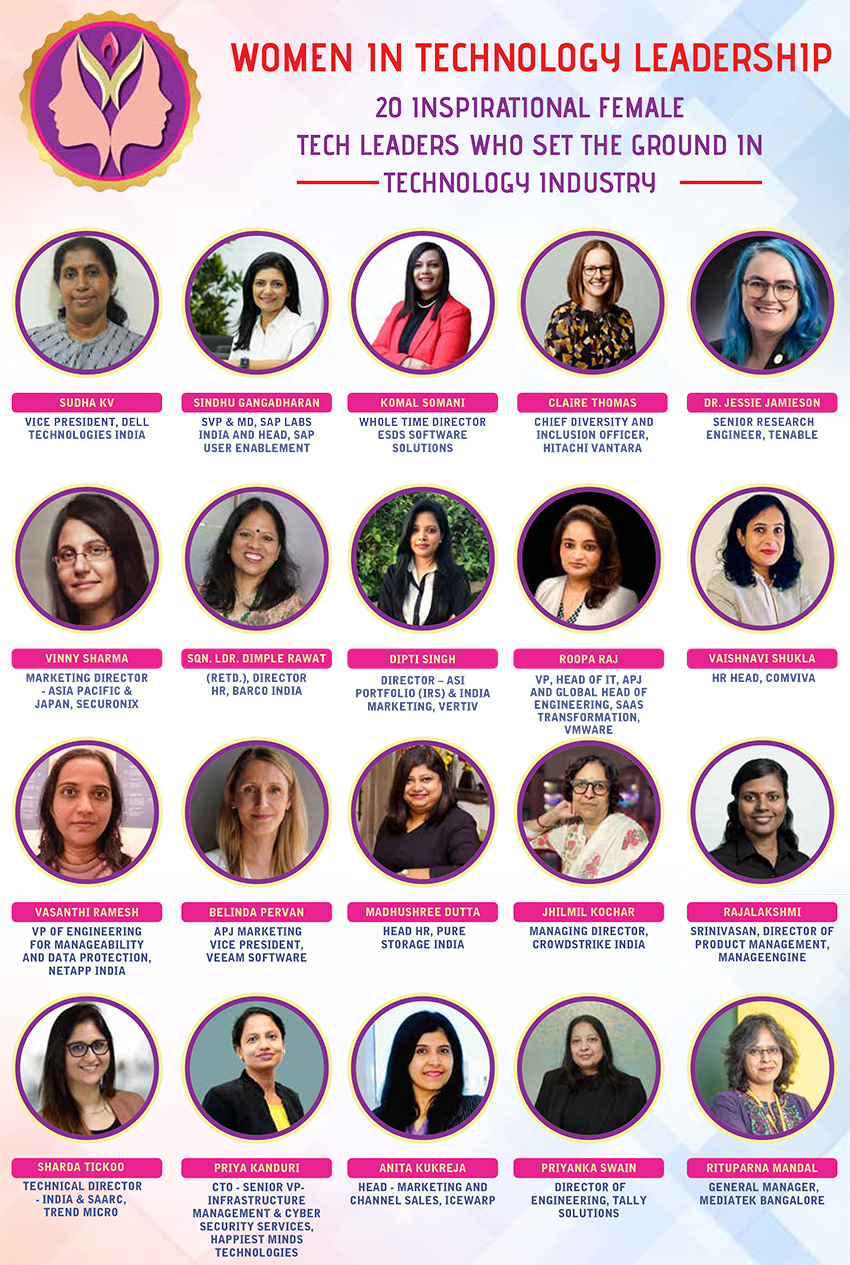
See What’s Next in Tech With the Fast Forward Newsletter
Tweets From @varindiamag
Nothing to see here - yet
When they Tweet, their Tweets will show up here.



















